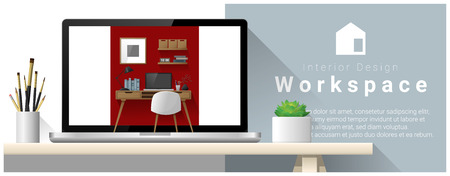Understanding Feng Shui for the Modern American Workplace
Feng Shui, an ancient Chinese practice, focuses on arranging spaces to promote harmony, productivity, and well-being. While it has deep roots in Eastern culture, its core principles can be easily adapted to fit American office environments. By understanding these key ideas, businesses in the United States can create workspaces that support employee satisfaction and boost overall performance.
What Is Feng Shui?
At its heart, Feng Shui is about balancing energy—also known as chi—within a space. The goal is to design environments where positive energy can flow freely, helping people feel comfortable and motivated. In a workplace setting, this can lead to better focus, teamwork, and creativity.
Core Principles of Feng Shui
| Feng Shui Principle | Description | How It Fits the American Office |
|---|---|---|
| The Command Position | Placing your desk or workspace so you can see the door without being directly in line with it. | Helps employees feel secure and aware of their environment; easy to implement in open-plan offices or private rooms. |
| Decluttering | Keeping spaces clean and organized to allow energy to flow smoothly. | Reduces distractions and improves productivity; aligns with modern minimalism trends. |
| Natural Elements | Incorporating plants, natural light, or water features into the workspace. | Makes offices more inviting; supports employee wellness initiatives common in U.S. companies. |
| Balancing Colors | Using colors that evoke calmness, focus, or creativity based on specific needs. | Allows for brand expression while supporting different work tasks (e.g., blue for focus, green for calm). |
| Cohesive Layouts | Arranging furniture to promote collaboration and communication while maintaining privacy when needed. | Suits flexible working styles and diverse teams often found in American businesses. |
Adapting Feng Shui to American Business Culture
You don’t have to follow every Feng Shui rule exactly as written. The key is to blend these timeless ideas with what works best for your team and business goals. For example:
- Open-Plan Offices: Use partitions or plants to define spaces and improve energy flow without sacrificing collaboration.
- Diverse Teams: Offer quiet zones for focused work and communal areas for brainstorming sessions.
- Remote Work: Encourage employees to apply basic Feng Shui tips at home by setting up dedicated work areas with good lighting and minimal clutter.
The Benefits of a Feng Shui-Inspired Workspace
A well-designed office doesn’t just look good—it feels good too. By applying basic Feng Shui concepts tailored for American workplaces, businesses can foster a more positive atmosphere where everyone is set up for success.
2. Optimizing Desk and Office Layouts
Designing your workspace with Feng Shui principles can make a big difference in how your team feels and performs every day. Here are some practical tips for arranging desks, workstations, and office furniture in a way that encourages productivity, collaboration, and positive energy flow—while keeping American work culture in mind.
Desk Placement: Command Position Matters
One of the core Feng Shui ideas is the “command position.” This means placing the main desk or workstation so you can see the entrance to the room without being directly in line with the door. In American offices, this helps workers feel safe and aware of their surroundings, which can boost focus and reduce stress.
| Desk Position | Energy Flow | Productivity Impact |
|---|---|---|
| Facing the door (not directly in line) | Welcomes positive energy, offers control | Increases confidence and concentration |
| Back to the door | Blocks energy flow, creates unease | May lead to distractions or anxiety |
| Side to the window | Balances natural light and focus | Keeps energy fresh but not overwhelming |
Encouraging Collaboration with Smart Layouts
American businesses often value teamwork. To foster collaboration while respecting personal space, try using “open clusters” of desks rather than long rows or closed-off cubicles. Make sure everyone has enough room to move freely—this supports both positive energy flow and spontaneous conversation.
Tips for Collaborative Layouts:
- Avoid placing desks directly back-to-back or face-to-face; use slight angles or staggered layouts for better energy movement.
- Create small meeting nooks or lounge areas with comfortable seating for quick team discussions.
- If using open-plan spaces, add plants or low partitions to provide privacy without blocking light or air circulation.
Arranging Office Furniture for Success
The way you place other furniture also matters. Keep walkways clear to prevent “blocked qi” (energy). Choose rounded tables for meeting rooms to encourage equality and smoother communication—an important part of many American office cultures.
Quick Guide: Furniture Placement Do’s and Don’ts
| Do’s | Don’ts |
|---|---|
| Leave space behind chairs for easy movement | Cram furniture against walls or block windows |
| Add plants near entryways or in corners | Create cluttered pathways or dead-end spaces |
| Use ergonomic chairs and adjustable desks | Ignore comfort—uncomfortable furniture disrupts energy and focus |
Create an Inviting Workspace Atmosphere
A workspace designed with these Feng Shui tips not only supports productivity but also makes employees feel valued and energized. Try rearranging your office based on these guidelines—you might notice more creativity, teamwork, and good vibes all around!

3. Choosing Colors and Materials for Success
When designing a Feng Shui-friendly workspace for American businesses, choosing the right colors and materials is key. The colors and textures you select can influence energy flow, productivity, and even employee happiness. Here’s how you can blend traditional Feng Shui advice with popular American design trends to create a balanced and modern office.
The Power of Color in Feng Shui
In Feng Shui, each color connects to one of the five elements: Wood, Fire, Earth, Metal, and Water. These elements represent different energies and can impact mood and success at work. In American offices, neutral tones are often preferred for a clean, professional look, but adding strategic pops of color can boost both style and positive energy.
Color Guide for Office Spaces
| Feng Shui Element | Recommended Colors | American Design Match | Best Placement/Use |
|---|---|---|---|
| Wood | Green, Blue | Sage green walls or blue accent chairs | Creative areas, meeting rooms |
| Fire | Red, Orange, Purple | Burgundy rugs or orange decor pieces | Reception areas, break rooms |
| Earth | Yellow, Beige, Brown | Light tan paint or wood furniture | Main workspace, private offices |
| Metal | White, Gray, Metallics | Gray desks or metal fixtures | Conference rooms, tech zones |
| Water | Black, Deep Blue | Navy artwork or black chairs | Lobbies, quiet corners |
Selecting Materials for Harmony and Productivity
The materials used in office furniture and decor can also affect the balance of energy. Mixing natural materials with modern finishes fits well with both Feng Shui principles and current American office trends.
Material Suggestions for a Balanced Workspace
- Wood: Symbolizes growth; use wooden desks or shelves for warmth and creativity.
- Metal: Encourages focus; metal frames or light fixtures add a sleek touch.
- Glass: Represents clarity; glass tables or partitions help open up the space.
- Cotton & Linen: Bring comfort; use these fabrics for upholstery or curtains.
- Avoid plastic: It can disrupt natural energy flow—opt for eco-friendly alternatives when possible.
Merging Feng Shui with Modern American Style
You don’t have to choose between good energy and good looks. Neutral palettes paired with bold accents are always on trend in the U.S., while Feng Shui encourages balance through thoughtful use of color and material. Aim for a clutter-free environment with plenty of natural light and greenery. This not only attracts positive energy but also creates a welcoming atmosphere that appeals to employees and clients alike.
4. Incorporating Plants and Natural Elements
Bringing plants and natural elements into your workspace is one of the easiest and most effective ways to enhance Feng Shui, especially in American office settings. Plants help purify the air, boost mood, reduce stress, and add a sense of vitality to any environment. By connecting with nature, employees often feel more relaxed and focused throughout the workday.
Benefits of Adding Plants and Natural Features
- Improved Air Quality: Many common indoor plants help filter toxins from the air, making it healthier for everyone.
- Enhanced Creativity & Productivity: Studies show that having greenery nearby increases creativity and focus.
- Stress Reduction: Greenery has a calming effect, helping people feel less anxious and more comfortable at work.
- Aesthetic Appeal: Plants add color and life to otherwise plain offices, creating a welcoming atmosphere for employees and clients alike.
Popular & Practical Office Plants in the U.S.
| Plant Name | Feng Shui Benefits | Care Level | Notes |
|---|---|---|---|
| Pothos (Devil’s Ivy) | Promotes positive energy; easy to grow | Very Low | Tolerates low light; great for desks or shelves |
| Snake Plant (Sansevieria) | Cleans air; symbolizes resilience & strength | Low | Drought-tolerant; suitable for busy offices |
| Peace Lily | Brings tranquility; purifies air | Medium | Loves indirect sunlight; water weekly |
| Bamboo (Lucky Bamboo) | Symbolizes good fortune & growth | Very Low | Thrives in water or soil; avoid direct sunlight |
| Aloe Vera | Cleans air; healing properties; protective energy | Low | Loves bright light; water sparingly |
| Spathiphyllum (Sensation) | Adds calmness; excellent air purifier | Medium | Larger variety of Peace Lily; needs space for bigger offices |
Other Natural Elements to Consider
- Naturally Lit Spaces: Maximize natural sunlight by keeping windows clear and open when possible.
- Water Features: Small tabletop fountains can introduce soothing sounds and movement, which are associated with prosperity in Feng Shui.
- Wooden Accents: Use wood furniture or decor items to connect with the earth element and add warmth to your space.
Tips for Integrating Plants into Your Workspace
- Select low-maintenance varieties if you don’t have a green thumb or regular plant care isn’t feasible.
- Avoid placing thorny plants like cacti on desks, as these are thought to introduce harsh energy according to Feng Shui principles.
- Add plants near entryways or corners to soften sharp angles and create inviting spaces.
The Takeaway: Make Nature Part of Your Office Design
By incorporating popular and easy-care plants, along with other natural elements, you can create a workspace that feels fresh, balanced, and energizing—helping both employees and your business thrive.
5. Personalizing Workspaces Mindfully
Allowing employees to personalize their workspaces can boost morale and support individual well-being, but its important to do this in a way that maintains positive energy and harmony throughout the office. Here are some practical suggestions for American businesses looking to blend personal expression with Feng Shui principles:
Encourage Meaningful Decor Choices
Invite employees to decorate their desks with items that inspire them and reflect their personalities, such as photos, small plants, or motivational quotes. However, suggest they avoid clutter or overly bold colors that might disrupt the overall balance of the workspace.
Feng Shui-Friendly Personal Items
| Item Type | Feng Shui Recommendation | Why It Works |
|---|---|---|
| Small Plant (like a succulent) | Yes, place on desk corner | Adds life energy, purifies air, supports growth |
| Family Photo | Yes, one photo in a simple frame | Promotes happiness and emotional connection |
| Award Certificate | Yes, display modestly | Boosts confidence without overwhelming space |
| Loud Art or Bright Red Objects | No/Limit use | May create excess energy or distraction |
| Desk Organizer or Tray | Yes, keep tidy and minimal | Supports clarity and reduces clutter energy |
Create Clear Guidelines for Personalization
Offer general guidance about what’s encouraged—such as nature elements, calming colors, or inspirational objects—and what to avoid, like excessive decorations or items that may offend others. This helps maintain a harmonious and inclusive environment.
Suggested Personalization Dos & Donts
| Do | Don’t |
|---|---|
| Add a small plant or stone for natural energy. | Avoid sharp objects pointing towards you. |
| Select a few meaningful items only. | Avoid overcrowding your workspace. |
| Use soft lighting like a small lamp if needed. | Avoid harsh fluorescent desk lamps. |
Balance Individuality With Shared Energy Flow
Encourage employees to keep pathways clear and avoid placing large personal items that block communal spaces or walkways. Remind everyone that maintaining good Chi (energy flow) benefits all team members and contributes to a more productive atmosphere.
This mindful approach to personalization ensures everyone feels comfortable and empowered while supporting both individual wellness and the collective Feng Shui of your American workplace.

